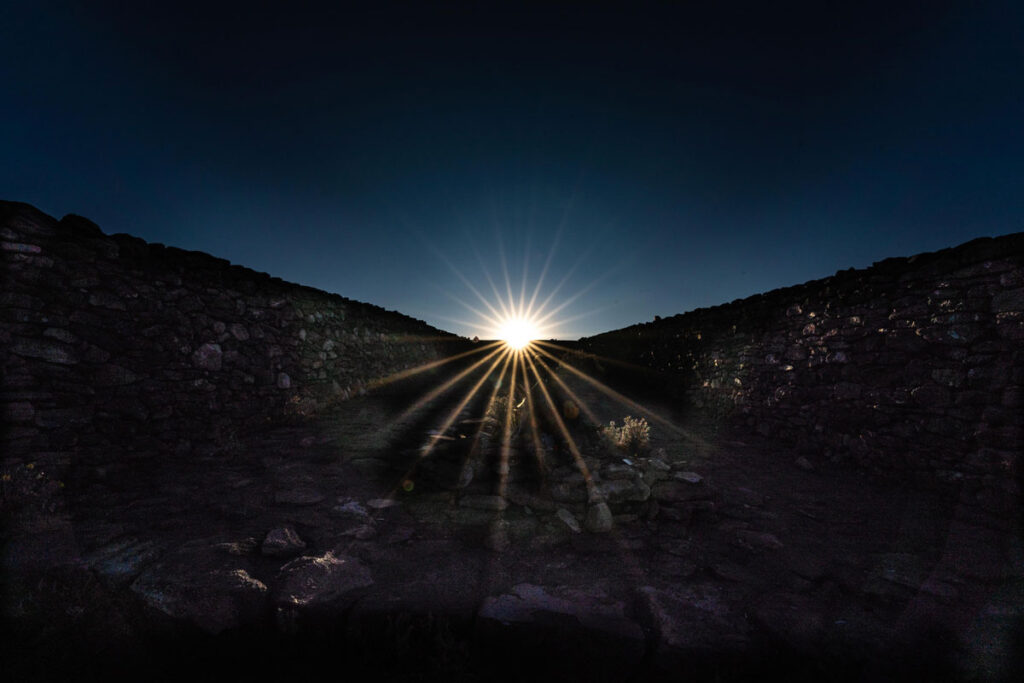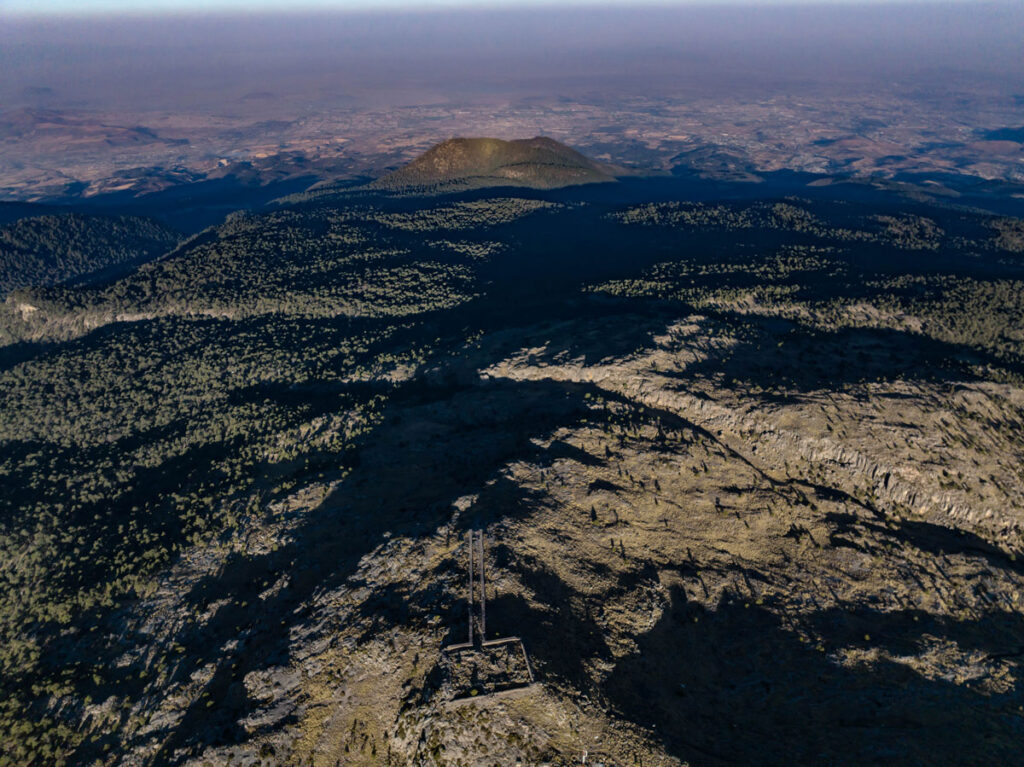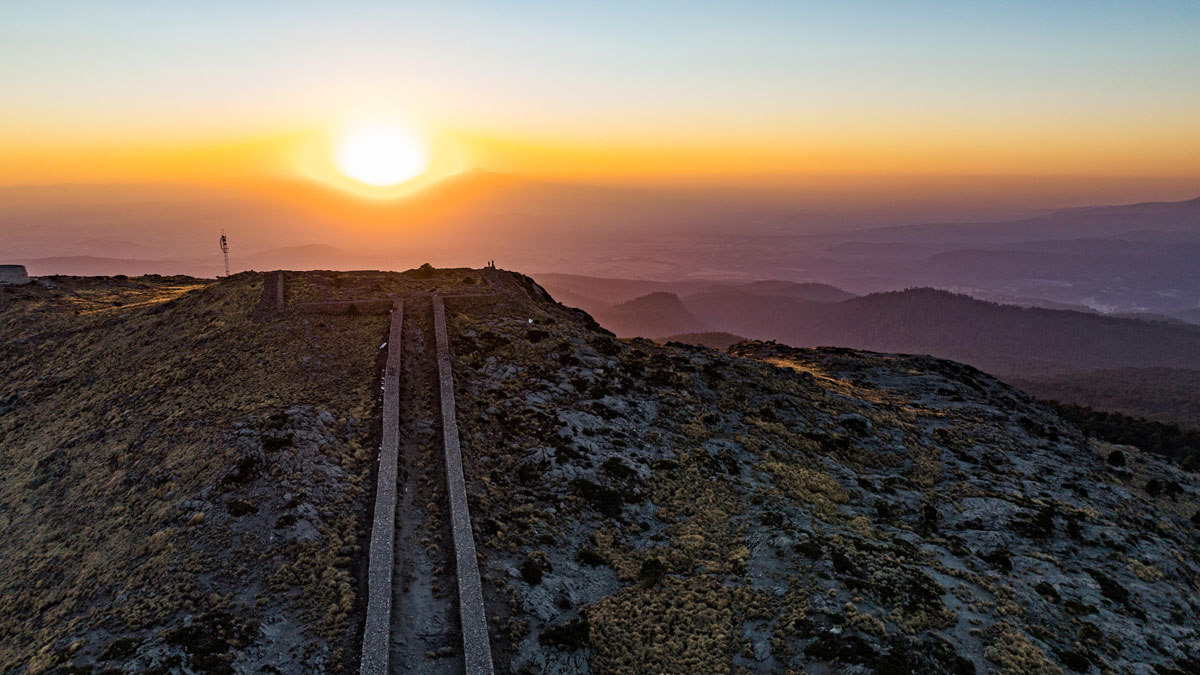A translation of this article was made possible by a partnership with Planeteando. Una traducción de este artículo fue posible gracias a una asociación con Planeteando.
On 24 February 2022, Exequiel Ezcurra and a group of colleagues climbed to the top of Mount Tlaloc, Mexico, the highest archaeological site in Mesoamerica. Between 1428 and 1521, Aztecs paid tribute to Tlaloc, the god of rain.
Trekking 4,120 meters above sea level was not just another of Ezcurra’s adventures. He was trying to confirm his latest hypothesis.
Contrary to some archaeoastronomers who have studied the site for decades, Ezcurra believes that Mount Tlaloc was more than a ceremonial center for the ancient civilization. He thinks it was a calendrical solar marker that allowed them to efficiently manage agricultural cycles.

Before the Spanish arrived in 1519, the Basin of Mexico was home to about 3 million inhabitants. Feeding so many mouths required extraordinary knowledge of the land and climate, said Ezcurra, an ecologist at the University of California, Riverside.
During the early morning, Ezcurra’s group waited patiently at the base of the causeway structure that leads to the mount’s peak. At 7:20 a.m., the Sun rose right at the center of the top edge of the road, as if it had been built with that exact intention.
The sight was “the most mystical thing my eyes have ever seen,” Ezcurra said.
The Horizon Calendar
Seasonal change in Mexico differs from much of North America and Europe. Spring is dry and dusty, whereas torrential rains—caused by the absorption of moisture coming from the Pacific Ocean, the Gulf of California, and the Gulf of Mexico—strike during the summer, a phenomenon widely known as the Mexican monsoon.
“In that scenario, any advanced rainfall could have confused farmers, which would have caused severe consequences for the harvest.”
Vegetation has adapted to these patterns. Several of the most common seeds found in the region, such as those of beans and teosintes (one variety of which was eventually domesticated as corn), have a hard outer layer and need several showers of rain to germinate. Ezcurra wondered how ancient civilizations successfully mastered agriculture in the region without using modern tools. “In that scenario,” Ezcurra explained, “any advanced rainfall could have confused farmers, which would have caused severe consequences for the harvest.”
Through astronomical computer models, the researcher and his team began to calculate where the sunrise was observed from the perspective of someone standing in Templo Mayor—the absolute center of ancient religious life, which was also used to make astronomical observations.
The concept of the “horizon calendar” is widely known among archaeoastronomers; it refers to the use of the landscape, such as mountains and hills, to mark sunrise to keep track of the changing seasons. It was used by civilizations across Latin America, explained Daniel Flores, an astronomer at the National Autonomous University of Mexico’s (UNAM) Institute of Astronomy who was not involved in the new research.
The results from Ezcurra’s team showed a clear association between sunrise and seasonal Aztec festivals and celebrations. The arid spring equinox, when the Sun rises behind Mount Tlaloc, was associated with the god of water and rain; the summer solstice, when the Sun rises behind the shores of Lake Texcoco, was associated with salt and corn; the winter equinox, when the Sun rises beside the Iztaccíhuatl volcano, was associated with fertility.
But among all the dates and events on the ancient calendar, there was one that did not coincide: 23 and 24 February, the dates marked as the beginning of the Aztec year by Rafael Tena Martínez, one of Mexico’s most prominent historians.
Ezcurra thought that previous civilizations must have used a horizon calendar before Templo Mayor was built. The hill of Tepeyac, where Tonantzin (the Aztec mother of all gods) was celebrated and which peaks above the clouds, “was the obvious place to observe the sunrise,” Ezcurra said.
By calculating when ancient sunrises occurred from the top of Tepeyac, the researchers noted that sunrise can be observed precisely at the top of Mount Tlaloc between 23 and 24 February, coinciding with what Tena had identified as the Aztec new year.
Ezcurra and his coauthors published their results in the Proceedings of the National Academy of Sciences of the United States of America in December 2022.
An Ancient Technology

Ezcurra’s team was also interested in the slope of the 150-meter causeway leading to the top of Mount Tlaloc, which deviates from the ceremonial center but aligns perfectly with Tepeyac.
“A calendar system that ignores leap years would accumulate an error of weeks in two or three generations, which would be catastrophic for the beginning of agriculture.”
What the team observed on the early morning of 24 February from the base of the causeway was that it was aligned not only toward Tepeyac, but toward the rising Sun.
This perfect alignment, according to Ezcurra, could have helped the Aztecs master the concept of leap years, a feat that is still debated among archaeoastronomers. “I came to this discussion with the perspective of an ecologist with an interest in agriculture…a calendar system that ignores leap years would accumulate an error of weeks in two or three generations, which would be catastrophic for the beginning of agriculture,” Ezcurra said.
Medieval European historians such as Motolinia argued that the Aztecs did not have the complex mathematical procedures needed to assess such precise time correction. But Ezcurra argues that through their own measuring technology, such as using Mount Tlaloc as a solar marker, Aztecs were perfectly capable of maintaining a sophisticated calendar, including adding or subtracting days to account for leap years.
Colgate University astronomer and archaeologist Anthony Aveni agreed with Ezcurra that the Aztecs were proficient in keeping track of time in a sophisticated manner. In fact, the entire concept of a leap year “didn’t exist for [Aztecs] because it is a Western contrivance,” Aveni explained. “People often think that they couldn’t do anything precise without technology.…It’s a presentist, ethnocentric view.” For Aveni, the problem is that “we’ve just become so dependent on [our technology] that we don’t realize what you can do with the naked eye.”
“The disregard and nonrecognition of the advances of ancient science are the legacy of the conquering imperialist mentality.”
The new research, however, has been criticized by other experts. Flores, for his part, thinks that the study is a “compilation of previous contributions.” (Aveni, for instance, published similar conclusions about the alignment of Mount Tlaloc in 1988.) Even so, Flores believes it is crucial to recognize that “the disregard and nonrecognition of the advances of ancient science are the legacy of the conquering imperialist mentality.”
For Ezcurra, the central argument of the study is, indeed, a critique of a historical approach that continues to center European worldviews. In the 15th century, “Tenochtitlan was one of the most populated areas on the planet,” he said, “which demonstrates a monumental agricultural capacity and an extraordinary food supply system, something that Europeans could not even remotely dream of having.”
—Humberto Basilio (@HumbertoBasilio), Science Writer

